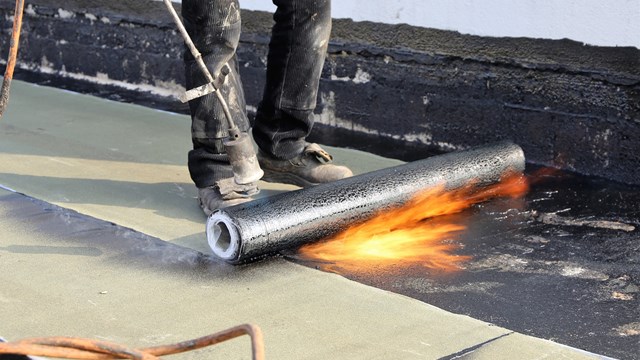What could be nicer than being safely home on a winter’s day, enjoying a cup of hot chocolate while snow falls outside your window? That is until you hear the drip, drip, drip more often associated with a rain event and find that the pretty snow from outside your home has transformed into the leaky headache inside your home.
Snow build-up and ice damming on rooftops are a leading cause of winter season woes: causing water damage inside a home or building. Water infiltration not only can damage the contents of your home but can also cause delamination of the roof sheathing and wood rot of the building’s rafters and framing, creating a structural safety issue. It also causes attic and wall insulation to fail, which can increase heating bills substantially. Furthermore, wet insulation is a prime location for the development of mold growth, which can lead to a number of health problems such as asthma, allergies, colds and sinus conditions. With so many risks, it is important to understand the causes and prevention methods for snow build-up and ice damming.
It’s Not a Snowman
Snow build-up occurs anywhere that snow can accumulate on a roof and remain without sliding off, such as valleys and on flat roofs. The most common area of concern is wherever a vertical wall exists, such as at a chimney or the junction of a step-up from a lower roof to an upper roof. The vertical wall creates a space for snow to sit for extended periods of time and to extend up above the step flashing installed during standard roofing construction, which generally reaches only a few inches up the vertical wall. If the building paper is not installed correctly, the problems are further exaggerated. As the snow melts, the moisture can travel behind the siding, dripping down the inner wall behind the step flashing and into the building. The same problem occurs behind chimneys whenever the snow builds up higher than its crickets.
What is an Ice Dam?
An ice dam is the thick layer of ice that builds up along the edge of a roof and clogs the gutters, and moves up the roof and under the shingles. Normally, snow build-up melts and flows off the edge of the roof or through the gutters. When the air temperature is very low, however, this water refreezes at the edge and in the gutters because these areas are not warmed by any attic space below them. This rim of ice traps runoff water, which then backs up on the roof, travels under the shingles and leaks inside.
Improper insulation and a lack of ventilation accentuate the problem. Both improper insulation and insufficient ventilation allow heat to migrate into the attic and warm the underside of the roof causing the snow to melt. Furthermore, short sheathing at the gutter location creates a gap between the roof sheathing and the fascia board at the eave lines, allowing backed-up water to enter directly into the attic space.
One solution which does not address the causes of ice damming but does prevent the intrusion of water into the interior space is the installation of eave flashing. The use of a membrane such as Ice and Water Shield is recommended. Such membranes have adhesive backing that stick to the roof and wall sheathing, are self-sealing and will not allow water penetration at the fasteners.
The best way to prevent ice dams and curtail water infiltration problems is to decrease the heat in the attic space below the roof deck. The cooler the attic is, the less melting will occur. Improving insulation and ventilation is one of the most effective means of keeping the temperature of the space directly below the roofing at an appropriate level. This area should be the same temperature as the outside temperature.
Without adequate ventilation, heat will build up regardless of the amount of insulation. There are many ways to increase ventilation such as gable vents, ridge vents, soffit vents and box or dome vents. Although increasing attic ventilation will take some time, effort and money, the movement of air it creates substantially cools this area of the home or building and helps protect the owner from potential damage from snow build-up and ice damming.
Quick fixes, such as removing the gutters or sweeping the snow off the roof after each storm, are not a replacement for long-term solutions. Both alternatives ignore the cause of the problem and threaten life, limb and roof. Another option is to mount heating cables on the roof which will not allow the formation of the ice dams. However, heating coils not only have the tendency to burn out if not properly regulated but, also, in some cases the ice dams form above the coils. Ironically, cooling the roof, rather than heating it, is the best way to prevent snow and ice dam problems.
Snow build-up and ice dams can be a nightmare, causing water infiltration and subsequently extensive interior wall, ceiling and personal property damage. However, by consulting with a professional engineer, and informing yourself about solutions–such as installing eave flashing, correcting inadequate attic ventilation and ensuring that insulation is properly installed–you can find effective methods of contending with winter’s less wonderful attributes.
Mitchell H. Frumkin, PE, RS, CGP is the president of Kipcon, Inc., a full-service New Jersey-based engineering firm specializing in community association services.







Leave a Comment